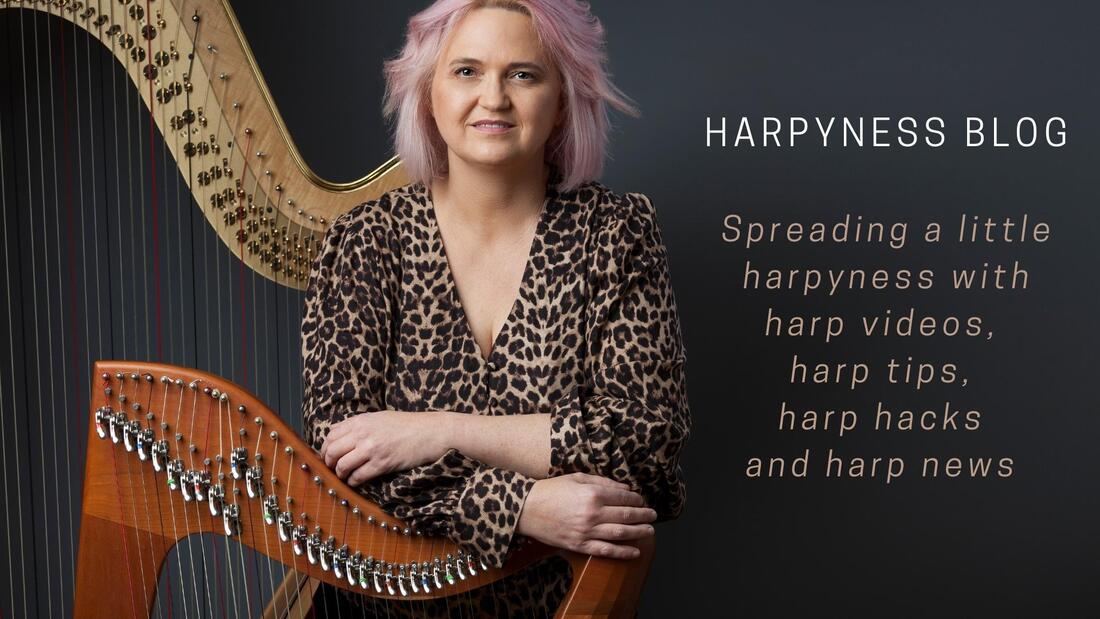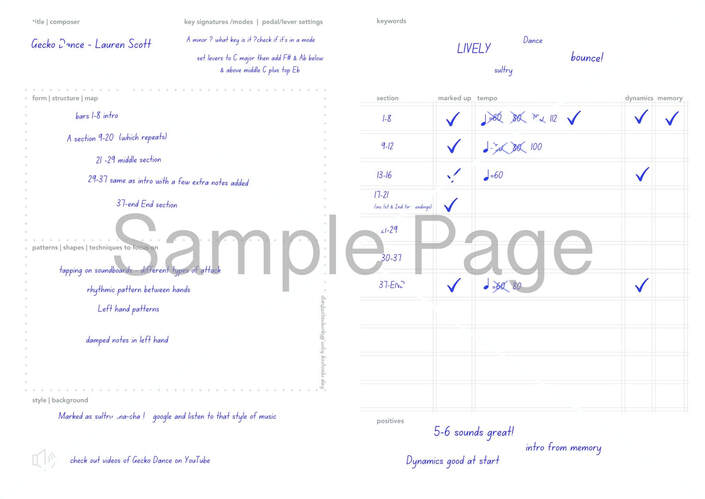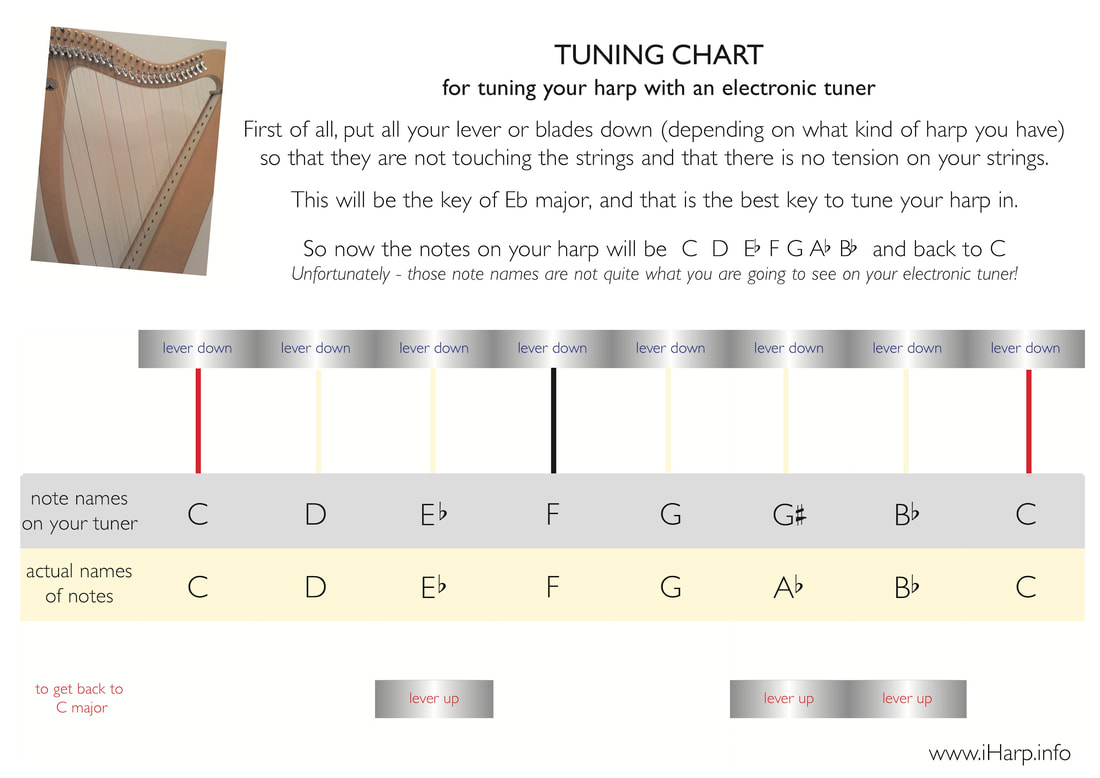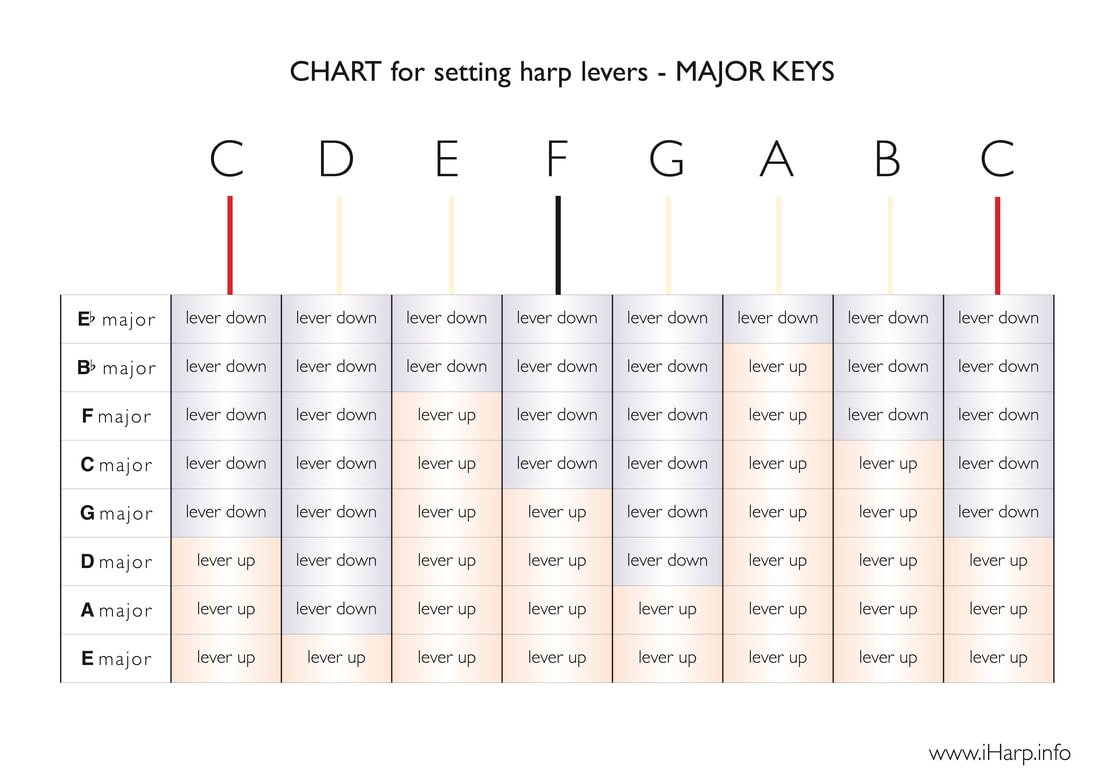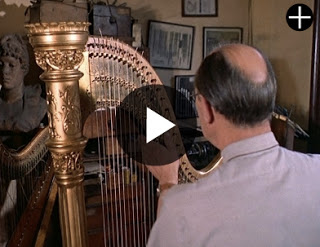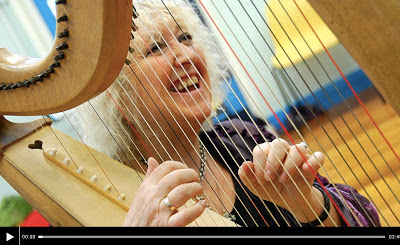|
I've recently created some practice templates which are available for free from my online shop on this website. It's a learning resource suitable for all musicians (not just harpists) and for any level of player. As such i've created 2 versions, 1 for harpists and a general one for non-harpists. Here is a mock "filled in" version which hopefully gives an idea of how you can use them I'd love you to have a go and see how you get on using them. Please do let me know if you find them useful !
There's more information on how to use them in my web shop. link below
0 Comments
Initial set up with your harp Tip 1. Are you sitting correctly?This may sound obvious, but it's important to sit so that YOU are comfortable with no twisting or bending of your spine and that you adjust the harp to you. Rather than you adjusting your body to the harp. You should never be feeling uncomfortable when you play the harp. If you do have any aches - STOP! Put the harp down and check your posture.
Now that you are centred, move the harp back towards your shoulder so that it 'fits' you in this balanced position. You might need to put the legs of your harp away from you a little bit . You also might need to twist the angle of the harp a little bit so that it's not 'square' on to you, but more 10 degrees to the left. The harp when it tilts back towards you is aiming towards your right shoulder and not your head! Tip 2. How to tune your harpTo get the most out of your lever harp, you want to be able to play in as many keys as possible. Tuning in Eb major gives you the most useful range of keys. With all levers down the harp needs to be tuned into Eb major. If you don't already have one, get yourself an electronic tuner. They are very cheap to buy and you can also get an app to download to your phone. Check this chart when you first start to tune to check you know which notes you are looking for on your tuner - Ab will show up as G sharp on the tuner!
Top Tip 3. Setting the leversYou 'base' key that you are going to set your harp in the most will be C major, so you need to get used to setting it quickly to that key.
Levers work by engaging with the string to make the string shorter in length and thereby sharper. When the lever is off there is no engagement with the string and the string is at it's maximum length. However, the mechanics of the levers can differ according to the make and age of the harp. Some levers go up and down, some twist from side to side. Some will sharpen a string by going up, and some do the reverse. To make it easier the charts below are colour coded red and blue. red = hotter = lever on = sharp blue = colder = lever off = flat On your particular harp to get a sharp may be lever up or lever down! The majority of harps are levers up for sharp, but get to know what it is for you. Until you know and remember all the other key signatures, when you look at a new piece of music, check the key signature at the start and do whatever it says - from your base key setting of C major. so if it's a piece with sharp signs - you set to C major, and if it has one sharp in the key signature (G major) then you put your F levers on. If it's a piece with 2 flats in the key signature (Bb major) then you take the B & E levers off from your base key of C major. It won't take long to get used to the levers! When you aren't playing your harp, put all the levers back into neutral position of all levers off which is Eb major Don't worry it takes a while to understand at first, but it won't be long until it all makes sense and you are flipping levers like a pro! A while back, a blind friend of mine asked me to help her with restringing her harp as she had quite a few broken strings. She is a beginner harpist and was struggling a little bit with navigating her way around the harp. I said to her that I would investigate to see if there was a solution, so I got in contact with harp maker Mark Norris. I was making a visit up to Mark's harp studio in Peebles, Scotland so I had a chat to him about it and was delighted that he was up for exploring the possibilities of what could be done. He has been brilliant in finding a solution for her and in the end he developed a special textured varnish to apply to the strings. He sent me the varnish kit through the post and I made a short video explaining the whole process here of adapting the harp. After the harp was finished the big test was getting the harp back to my friend and what she thought about it all. She said that the textured strings were effective and helpful in finding her way round the harp!
It was interesting to see how she played her harp and in her case, it seemed that as well as applying the textured varnish lower down on the strings, it would also have been useful to apply it high up as well. It seemed more natural for her to slide her fingers up the string, rather than down the string to feel the textured guides. To sum up - a thin band of two coats of textured varnish applied in an inch wide band low down on the string were fine on the middle C string and lower. This didn't affect the sound quality of the string. All the strings higher than middle C were better with only 1 coat of varnish. Many thank to Mark Norris for being a total star with his time and effort in developing a solution for my friend. Mark Norris Harps. and order strings online at HarpStrings.Biz On my trip to Scotland to visit Mark Norris's studio he showed me how to tie the perfect harp knot HERE I've been buying my harp strings from Mark Norris for a while now https://www.harpstrings.biz/ and I recently have been chatting to him online about the possibly of adapting some strings to make them suitable for a blind harpist friend of mine. One thing led to another and I told Mark about my own customised string set up and that the intonation of my levers left a little to be desired. I was a bit nervous about telling a harp maker how I had dived in and started customising and playing around with a harp set-up, but he was extremely generous and said that he would have a good look at my harp and fix my levers so that it would be properly in tune! I know Mark doesn't normally look at other makes of harps apart from his own, so it was an extremely generous offer from him. So this meant a long drive to his studio in Scotland which was 8 hours of driving in total there and back from my home. But I took lots of breaks and what a splendid drive it was. I had to stop to take a picture of the view near to his studio. I have to admit to being a complete harp nerd, and visiting a harp makers studio is heaven for me! Absolutely amazing to see a craftsman at work and to see harps in various stages of being built. Whilst I was there Mark showed me a new project of his called Nifty Harps, and they are absolutely fab. He's developing a professional model and I can't wait to order a 27 string one next year. They are affordable harps with a really good sound and have a wrap around detached soundboard. Think along the lines of cardboard harps, but made with rolled wood. An absolutely brilliant project https://niftyharps.scot/ Mark was fitting a string whilst we were chatting and I couldn't believe the speed he went at. So here he is demonstrating tying the perfect harp knot slowly for me, and it's still so quick! Amazing! And to top it all off, Mark fixed the intonation on my harp.
Thank you Mark! We are nearly there with a possible solution on the strings for blind harpists, and I'll post about that another time The London Philharmonic Orchestra's principal harpist, Rachel Masters with her fabulous singing dog :-) OK - not harps as such, but..... a fascinating video interview with Andy Cavatorta, talking about the new instrument he's creating which is a magnetised piano-harp Andy is the creative genius behind the Gravity Harps which he built for Bjork's Biophilia Tour which featured Zeena Parkins on harp. Oh my goodness!! A lovely article in The Journal & video about David Watkin's father, Donald Watkins who was a locomotive pioneer and amongst other things, designed the dead man’s handle safety device for train drivers. It was seeing David Watkins in concert at the Queen Elizabeth Hall, Southbank when I was 6 that made me decide that I wanted to play the harp. The next day I drew a little picture of him playing the harp at the concert and my mum sent it to him. He was so kind and took the trouble of sending me a signed photo and kept up a little written correspondence with me for a while always making the effort to reply to the fan letters I sent him. Lovely man, a true gentleman.
Well here's a website worth bookmarking - New York Philharmonic Leon Levy Digital Archives Where you can view over 370 harp parts from the library of the New York Philharmonic Orchestra. How amazing and incredibly USEFUL is that! FANTASTIC. It is for research only and not for printing and using on gigs. How many times do you get booked for a gig, and the librarian can't get you the part to look until just before the gig... and it would be really handy to look at the part before you get there. Well now you can check out that harp part and know whether you need to panic or not!!! That's worth a round of applause to the amazing archivists who have done this work. I scream each time I watch this - I defy any harpist not to watch this without screaming!!! Epic scene getting harp into a small car from 0:58 seconds in. I have got a harp into a small hatchback back in my pre-college days before I learnt to drive and had to rely on lifts. However we took the front passenger seat completely out and then (CAREFULLY) lifted the harp in so that it went in backwards with the pedal end into the foot well of the passenger side.
I used to regularly get taxis and then the overground train to gigs, which shows my age as I'm sure you certainly wouldn't be allowed onto a train with a harp now. I even ended up locked in the guards van once (with my harp) on a train from London Victoria to Canterbury. Ahh... those were the days! Very interesting article by Jon Butterworth in The Guardian and fascinating to read about it from a physics point of view. Also in the article are links to a research paper by Chris Waltham on harp design and construction.
For the less scientifically minded the images of the harp soundwaves are fascinating. link to The Guardian article ishere The very lovely Athy playing one of his compositions on TV - is it me or is it hotter than 29 degrees? lovely harmonics and what a fantastic finish on the harp.
My last post got me thinking about posture and harp playing and teaching. I was lucky enough to have regular Alexander Technique lessons for 2 years when I was a teenager, so I have grown up with the need for correct posture being ingrained in me. I try to make sure that good posture is a fundamental part of my teaching and my students probably get fed up with me going on about it all the time! It's pretty common place now for Alexander technique to be offered as part of a harp course and there are lots of links on the web, and also lots of harpists who have trained in Alexander Technique. I recently found this brilliant short article by Coralie Cousins who takes a regular class at the Paris Conservatoire for Isabelle Perrin. Beautifully illustrated with lovely drawings, it's certainly a good reminder of why correct posture when playing the harp is so important.
Very sad news of the passing of the harp repairer, Jim Munson on Christmas day. This Pathe news video from 1961 shows a very young Jim Munson working in the workshop of John Morley. Click here to view this short video I have very fond memories of making the long trek via public transport on my own when I was still at school in the 80's to the Munson and Harbour workshop when it was in Kentish Town in North London to buy my harp strings. Thinking about it now, I would never have let my kids travel that distance across London on their own at that age, but it was all different then... I would climb those stairs to get to the workshop on the second floor and see them working on all the harps, and then go into the side room which was stuffed floor to ceiling with sheet music and Jackie would put up with me spending hours going through all their music, even though I'd only have the money to buy a couple of strings!
ometimes you come across something unexpected that just puts everything in perspective.
I came across this wonderful audio slideshow interview with harpist Annie Mawson on the BBC wesbite. She founded a charity twenty years ago called theSunbeams Music Trust which works with children and adults with varying levels of disability. A truly remarkable woman whose charity has been doing amazing things with music therapy in Cumbria for many years. Bravo! Click on the image below to watch the interview, it's wonderful. |
Categories
All
AuthorLauren Scott is a harpist & composer and has been blogging on Harpyness for over 10 years. If you enjoy reading Harpyness and you'd like to buy me a virtual coffee that would be very welcome. Cheers!
Archives
June 2024
|
